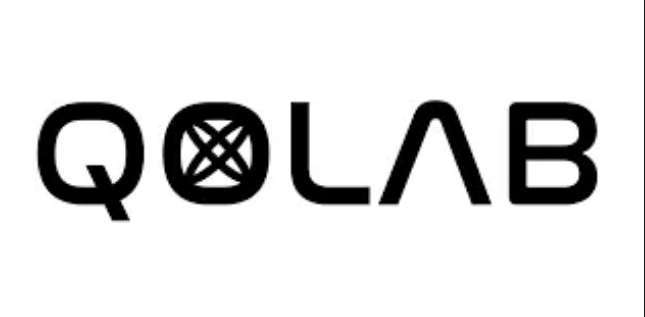
Sir David Attenborough, a famous British naturalist, recently quoted, “In my lifetime, I’ve witnessed a terrible decline. In yours, you could and should witness a wonderful recovery.”
However, HPCs are already facing several challenges to living up to current demands and expectations. First and foremost, HPCs are incredibly energy hungry. For instance, these machines require 100 MW power, equivalent to the energy needed to power 80,000 USA homes [1]. Secondly, while these machines continue to grow, they are reaching a consumption level that isn’t sustainable. Training an artificial intelligence model requires an algorithm to run on HPC, which could produce 284,000 kg of CO2 in its lifecycle [2]. That’s approximately the equivalent of the lifetime emissions of five average American cars, including the manufacturing process. An alternative to HPCs is the next generation computing technology of Quantum computers, which are more powerful yet require lower energy consumption. Due to its reliance on the quantum mechanics phenomenon, Quantum computing will be less time-consuming in computational activities, thus further cutting down the amount of energy consumed [3]. Additionally, they have the potential to be even more potent than they are now, as they’re still in their initial stages of development.
Below we list out some applications in the quest for actionable steps to mitigate climate change using quantum powered simulations:
Electric Vehicle – From an electric vehicle’s perspective, there is significant room for improvement in batteries. Much of the focus is given to increasing their energy density. The electrochemistry simulation to study the chemical reactions and optimization of battery weight would go a long way in lowering EV costs [4]. In addition, quantum computing could help speed up the research in materials used for building these batteries. Running simulations to see how these materials might interact with chemical catalysts, such as corrosion, can cut development time by years and increase the lifetime of batteries. These factors would, in turn, make the switch to electric vehicles much smoother.

Material Discovery – There are several ‘new materials’ in the process of being discovered that could improve energy conversion, transmission, storage, energy use, and optimizing the design of carbon-intensive materials, all of which impact climate change [5,6]. Over the past several years, the material discovery has significantly boosted through molecular simulation by HPCs. But as the molecules get more complex, the simulation becomes more computationally intensive. Typically, this takes years of research, and computing becomes a bottleneck. On a Quantum computer, the molecular simulation would be quick and accurate [7].
Renewable Energy – Another critical goal is to phase out coal usage and accelerate the switch to renewable energies. With higher computational capabilities, we could accelerate the number of simulations to improve solar cells or wind farms. We can also optimize grid infrastructure using Quantum machine learning which can reduce the turnaround time and with more accuracy [8]. Quantum computing is currently being utilized for other clean energy alternatives such as hydrogen fuels for safe rollout [9].
Aircraft Design – Performing computational fluid dynamics simulation using Quantum computing by developing an efficient solution for calculating PDEs would reduce wing drag, making airplanes more energy efficient. Even a small improvement in the design would prevent millions of tons of CO2 from entering the atmosphere [10].
Weather Modelling – We also look toward weather modeling to limit carbon footprint. Theoretically, quantum computing can aid in more accurate forecasts to model carbon footprints to forecast more accurately due to its capability to take in more input data than classical computers. Thus, enabling a well-curated plan for energy generation and supply and aiding meteorologists and environmental scientists in creating accurate climate models to understand the effects of clean changes to behavior and technology on the planet and its ecosystems [11].
Agriculture – Fertilizer production is an energy-intensive process, consuming about 2% of global energy. There is a strong motivation to develop more environment-friendly fertilizers by understanding the behavior of various bacteria. Due to the requirement of having detailed simulations of enzymes and proteins forming these bacteria, quantum computers have become a far better option than classical computers [12,13].
Green Cloud – The green cloud has been gaining popularity in other areas. Cloud computing significantly reduces the carbon footprint that data centers would otherwise be producing excessively. And quantum computing is responsible for data storage solutions that consume less energy [14]. There is a strong push for hybrid Quantum-Classical cloud systems within this perspective [15]. And in turn, these cloud-based, open-source development environments will make using quantum computers smoother.
Quantum computing is accelerating innovation. Many industries, especially automotive, aerospace, electronics, and manufacturing, require considerable computational power. And there is already a nice segue easing some of these industries from classical computing, particularly the quantum realm. Right now, we are in a great position to enter quantum computing. BosonQ Psi, understanding all this, aims to give the world that seamless transition. As we at BQP work towards our goals, we are also advancing the quantum computing environment to help address many issues across many industries. The world, the environment, the society, and the government affecting us are crucial topics that we constantly observe and aim to amend. As our environment worsens, we are forced to develop adaptations to get these same or better simulations done with less energy, and we are finding our answers in Quantum technologies.
References:
5. https://www.scientificamerican.com/article/how-quantum-computing-could-remake-chemistry/
7. https://www.ibm.com/quantum-computing/what-is-quantum-computing/
8. Consideration of the Need for Quantum Grid Computing (June 2021) by Dominic Rosch-Grace & Jeremy Straub of North Dakota State University.
10. Drag Reduction by Laminar Flow Control by Beck, Nils; Landa, Tim; Seitz, Arne; Boermans, Loek; Liu, Yaolong; Radespiel, Rolf (2018). Drag Reduction by Laminar Flow Control. Energies, 11(1), 252–. doi:10.3390/en11010252
11. Frolov, A. V. “Can a quantum computer be applied for numerical weather prediction?” Russian meteorology and hydrology 42.9 (2017): 545-553.
12. https://medium.com/quantum-london/quantum-computing-in-agriculture-623f8cee6484
13. https://www.verdict.co.uk/quantum-computing-carbon-zero/
If you found this article to be informative, you can explore more current quantum news here, exclusives, interviews, and podcasts.


















